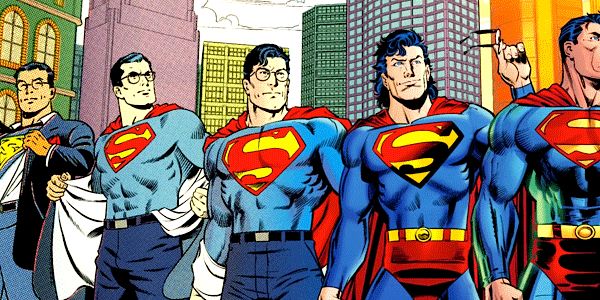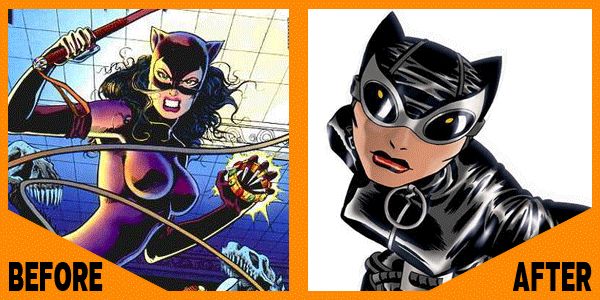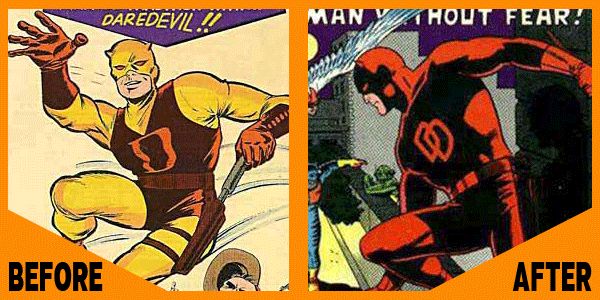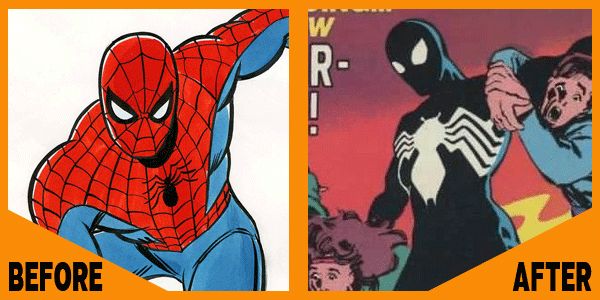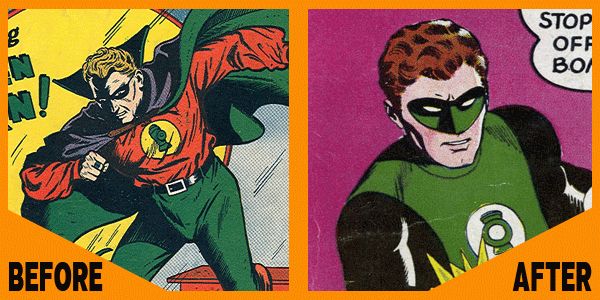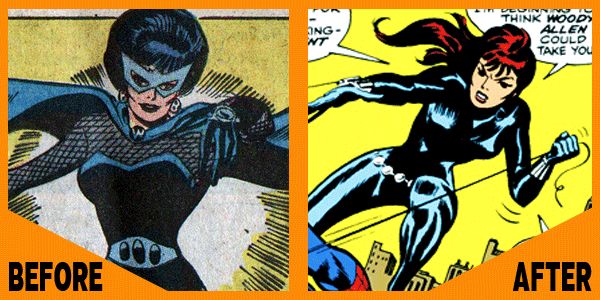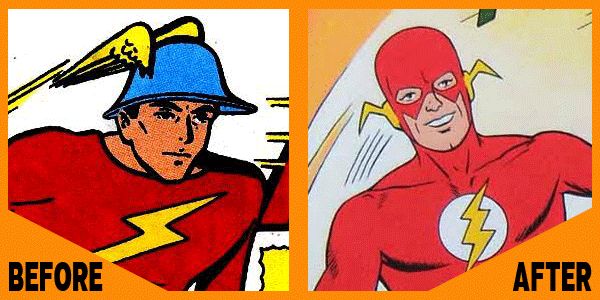One of the most symbolic moments of Superman is when he changes from his guise as Clark Kent to become the Man of Steel. The idea that the wearing of a costume imbues some kind of unquantifiable power is a key part of what makes superhero comics work; otherwise, they'd just be adventurers and action heroes.
But speaking of change, changes in superhero costumes have become as much a part of the comics as the heroes themselves. From Superman's early days with his golden emblem to the modern "S" today and on through to other years (including Batman's countless wardrobe changes), the design of a superhero isn't static and a redesign has proved, many times, to be just the thing to make a character work.
In this week's "Six by 6," I pinpoint six of the most dynamic and powerful redesigns in superhero comics. Redesigns that saved a character from obscurity, put them in a new light or simply simplified what was already there.
2001's Catwoman redesign by Darwyn Cooke: For most of the 1990s, Catwoman was synonymous with cheesecake artist Jim Balent, who did a epic six-year run on the character's series. But after Balent's departure in 1999 and the series' end with 2001's Catwoman #94, that era was over for Selina Kyle. But better times were to come for Selina. Artist Darwyn Cooke and writer Ed Brubaker took over the character, first in a series of back-ups for Detective Comics and then in their own series in late 2001. Where Balent's design focused on her sometimes-frazzled long hair, high heels and a purple panther-like onesie, Cooke's Catwoman played up the character's thieving roots with goggles, a simple zip-up catsuit and practical boots.
1964's Daredevil redesign by Wally Wood: Jack Kirby is king when it comes to his number of memorable superhero designs that have stood the test of time, but I can't help but say that his yellow-and-red outfit for Daredevil wasn't quite what was needed. It wasn't until Wally Wood took over the series and debuted the now-classic red rendition in Daredevil #7 that the character found himself. In some ways it was simply a recoloring of what Kirby laid down, but Wood's decision to go all red and do the overlapping D's proved to be just the thing to make the character stick inside the House of Ideas.
1984's Spider-Man redesign by Mike Zeck: It's one of superhero comics' most iconic designs despite its inherent complexity, and while ultimately it's endured, I still have a soft spot for the mid-'80s and Peter Parker's epic black costume. It came onstage during a dark time in Peter Parker's life, and I argue it was great even if the growing storyline of the symbiote and Venom had never reared its head. But all together, it was a great redesign that had its roots in storytelling and caused you to rethink who Marvel's wall-crawler really was.
1959's Green Lantern redesign by Gil Kane: Reboots and revamps are nothing new in comics -- it was being done as far back as the 1950s. One of the most successful revamps of all times was the decision by DC Comics editor Julius Schwartz to revive Golden Age characters like The Flash and Green Lantern. In this one, Schwartz tasked artist Gil Kane and writer John Broome to revisit the circus performer-looking Green Lantern and recreate him as more of a sci-fi figure, and Kane created one of the first superhero outfits that was for not only a character, but an entire team in the Green Lantern Corps. I can't even begin to imagine how the Hal Jordan Green Lantern would have fared had he kept Alan Scott's costume, and I'm glad it never happened.
1970's Black Widow redesign by John Romita Sr.: Introduced six years before, Marvel's Black Widow wasn't that major of a character, despite appearing as an ally to the Avengers from time to time. But after she dropped her gothic evening-wear attire in favor of a skintight catsuit, bracelets and belt, she became more than just another character in the mind of the House of Ideas. If she looked the way she did in 1964, do you think she could make it in today's Marvel comics, let alone in movies like Iron Man 2 and The Avengers?
1956's Flash redesign by Carmine Infantino: For its time, this redesign of DC's Golden Age Flash was arguably one of the most drastic changes superhero costumes had seen. Infantino threw out the original costume's references to the god Mercury and instead took cues from runners' outfits, boiling down the suit to its basics and making it one of the most simplistic yet memorable designs comics has seen before or since .

